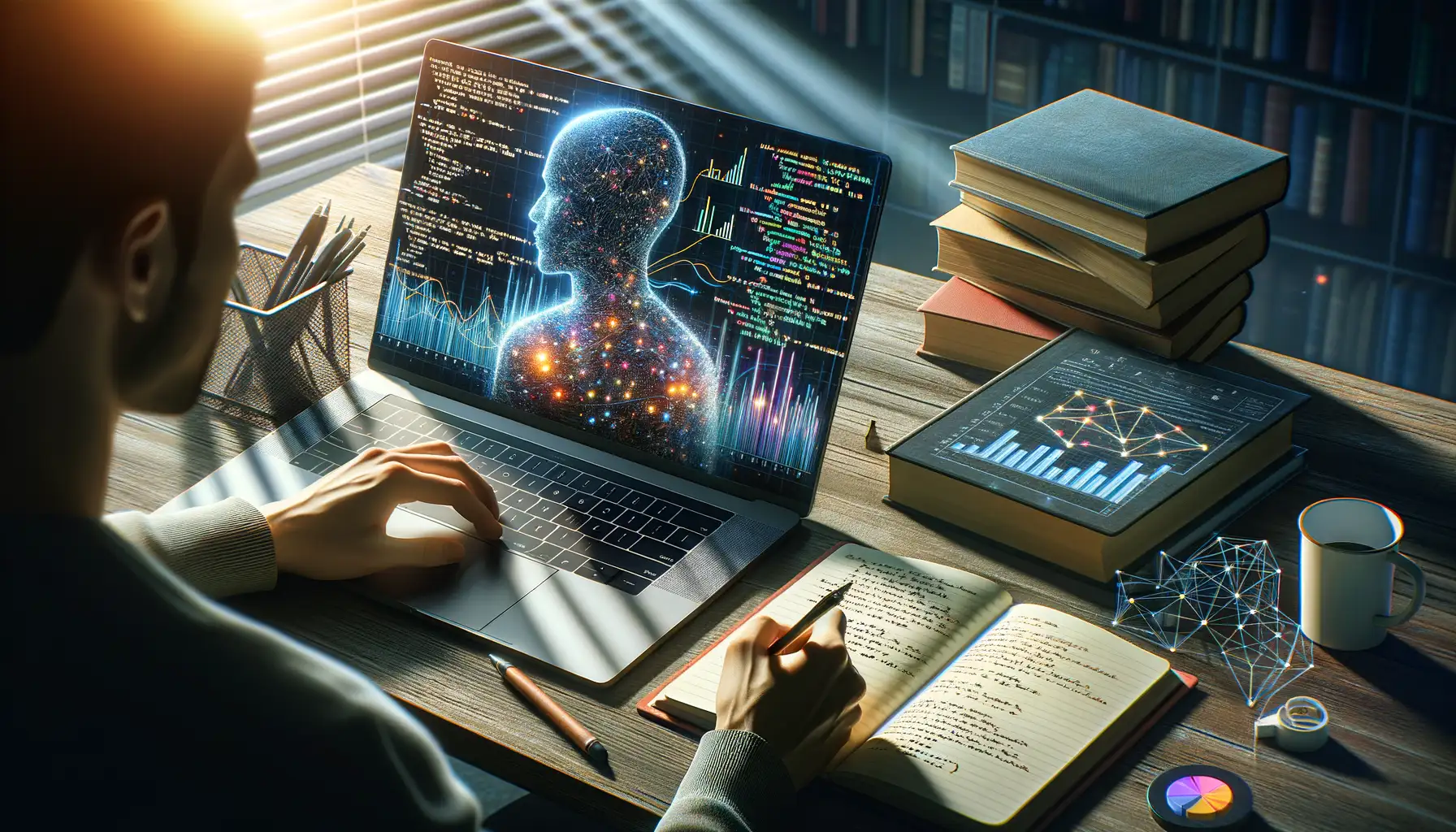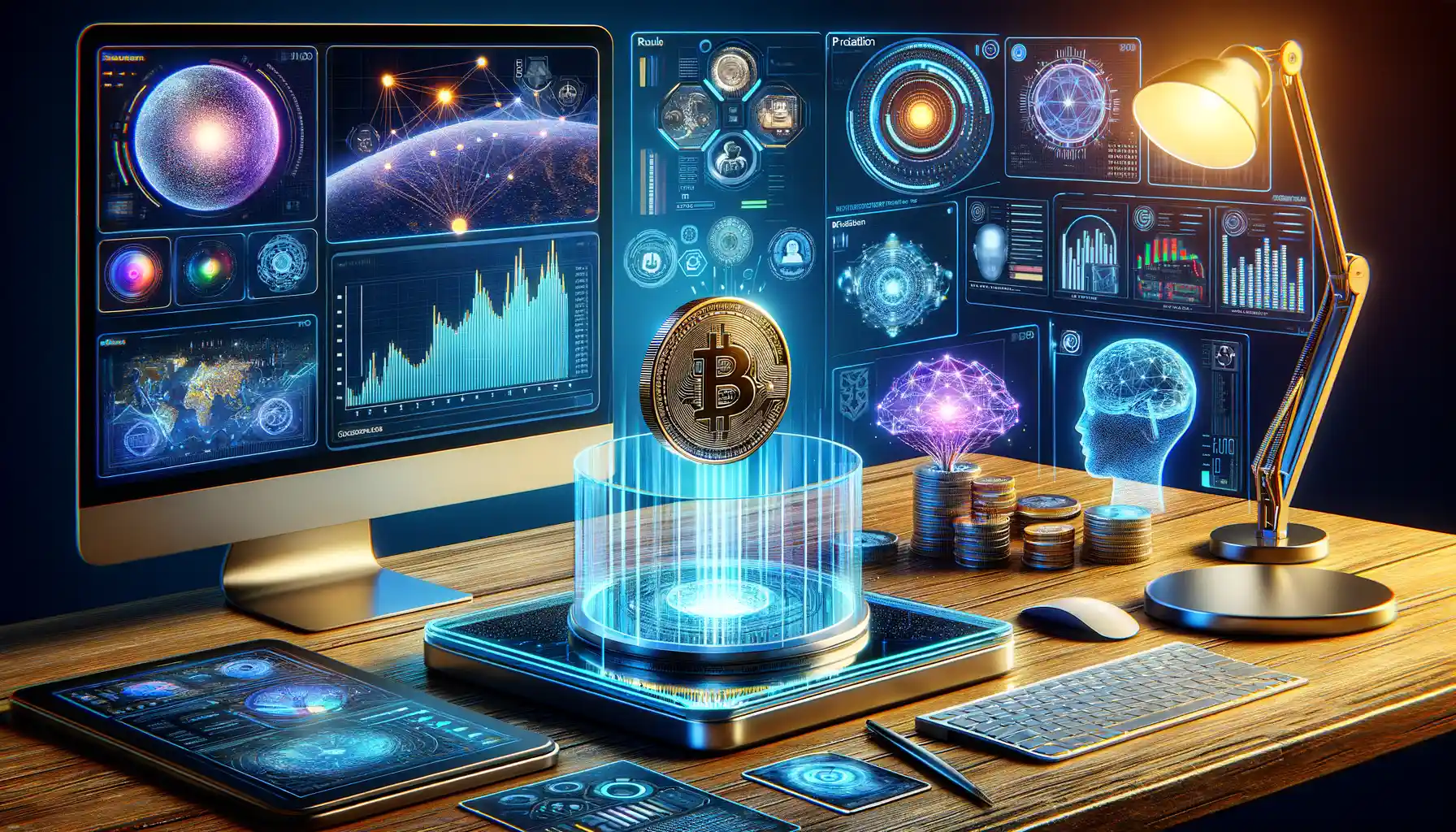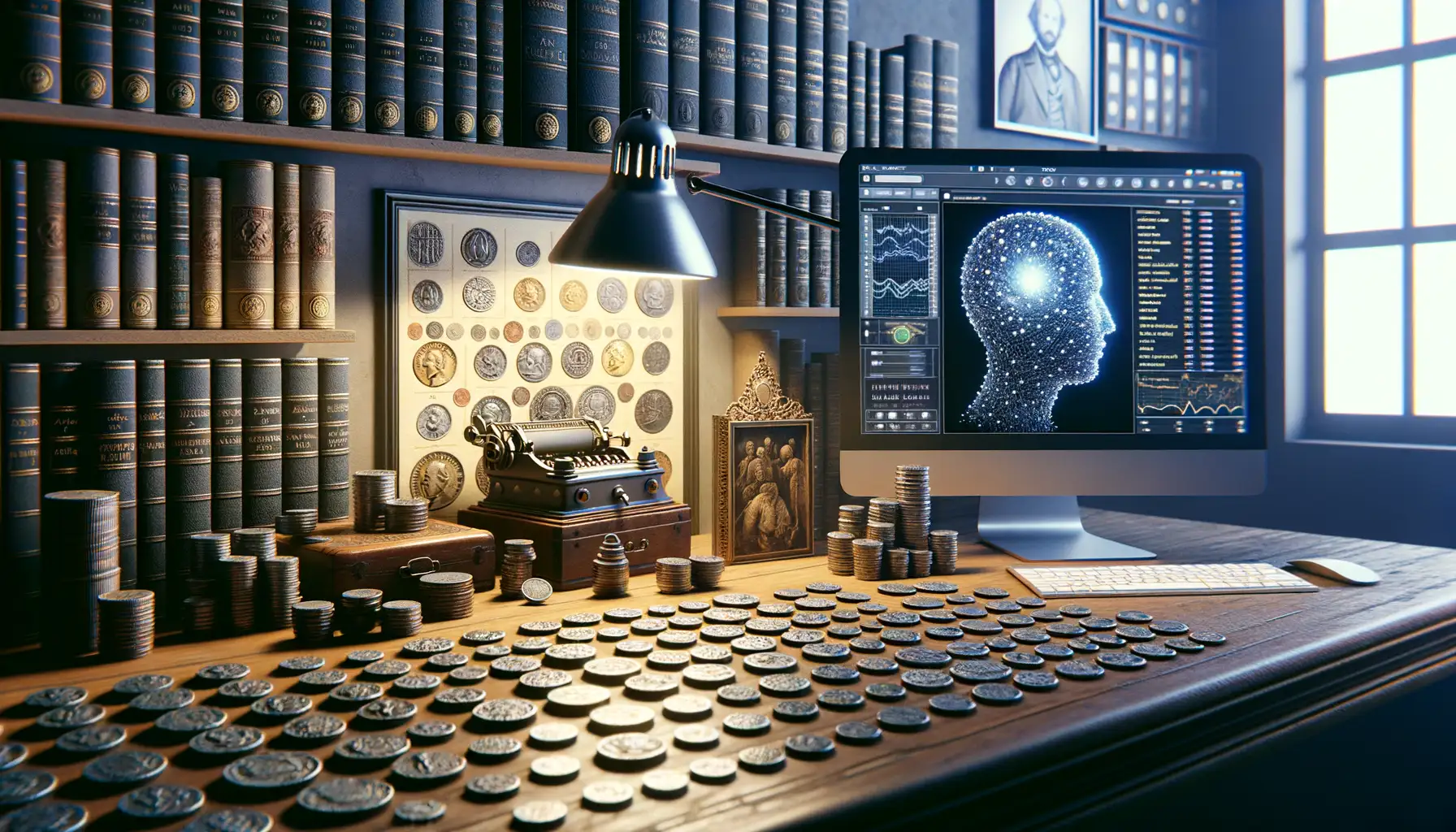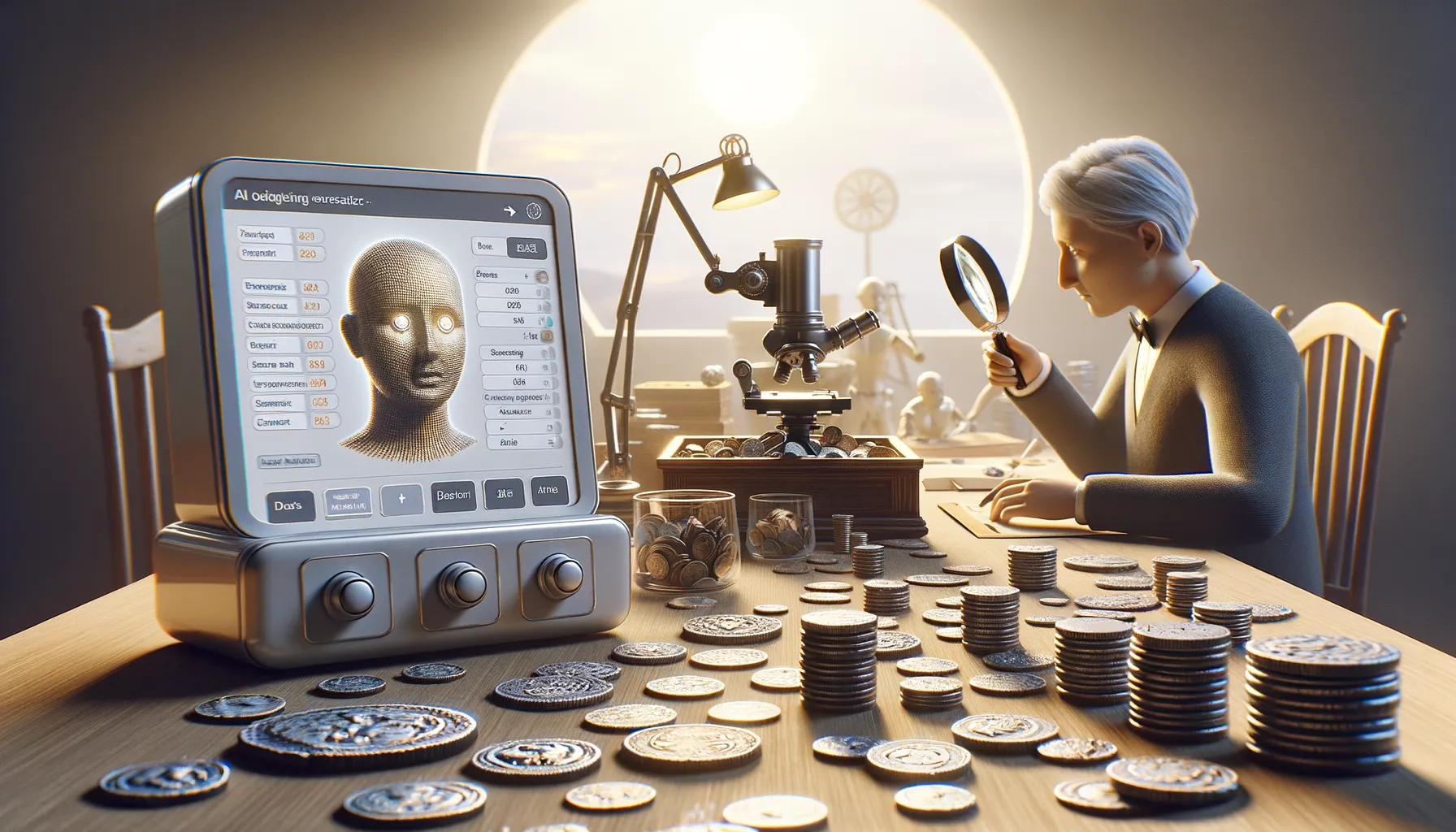Understanding Coin Valuation and the Role of AI
Why Coin Valuation Is More Than Just Numbers
Imagine holding a coin and wondering about its story. Where has it traveled? Who held it before you? Coin valuation is far more than assigning a monetary tag; it’s about unraveling these mysteries. The value of a coin depends on multiple factors: rarity, condition, demand, year of minting, and even subtle details like mint marks. A seemingly ordinary penny could be worth thousands if it carries a rare error or limited mintage.
Now, here’s the kicker: analyzing all these details manually can be exhausting and prone to errors. This is where AI revolutionizes the scene. Unlike traditional methods that depend on human intuition, AI digs deep into patterns, sifts through vast databases, and connects the dots faster than any appraiser could. Imagine having an AI companion that never tires, tirelessly scanning auction records, market trends, and historical data to ensure no hidden value escapes notice.
- Identify rare traits invisible to the untrained eye
- Analyze wear-and-tear with image recognition
- Predict market demand based on past sales
It’s like giving your collection a superpower, turning coins into dynamic financial assets, not just static relics.
How AI Reads Beyond the Surface
Here’s a fascinating analogy: just like you might read between the lines of a good novel, AI “reads” coins beyond their surface shine. Using machine learning algorithms, it spots tiny imperfections, die cracks, and other anomalies that might elevate a coin’s value exponentially. Imagine feeding your coin’s image to an AI tool and receiving insights in seconds—it’s like unlocking a treasure map with every upload.
What makes this technology truly exciting is its ability to adapt. AI learns from every piece of data it processes. Show it enough 19th-century silver dollars, and it’ll become an expert appraiser for that category. It’s not just about automation—it’s about precision and passion colliding.
Steps to Gather Data for AI Analysis

Start with Your Coins: The Art of Observing
Before AI can work its magic, you need to channel your inner detective. Start by examining your coin collection under a magnifying glass—literally! Scrutinize every detail, from the year and mint mark to any intricate patterns or imperfections. These seemingly tiny details might just hold the key to unlocking their value.
Use a notebook (or your phone’s notes app) to record specifics for each coin. Think of it like building a dossier for each of your prized pieces. Are there rare dates? Limited editions? Misprints? Every nugget of information matters.
Here’s a good starting point:
- Date and Mint Mark: What year was it minted, and where?
- Condition: Are there scratches, tarnish, or is it shining like new?
- Material: Is it gold, silver, copper, or something surprising?
Take It Digital: High-Quality Photos Matter
Imagine trying to judge someone’s style with blurry photos—it’s impossible, right? Same goes for coins. Snapping high-quality, close-up images of your collection is crucial. Use natural light and capture both sides of each coin. Trust me, this isn’t overkill; it’s what makes your data AI-ready.
If you have a smartphone, use a macro lens attachment to catch those fine details. And don’t forget to add a ruler or familiar object for scale in the photo—AI loves context!
AI Tools and Technologies for Coin Value Prediction

Dive Into the Toolbox: The Magic Behind AI Coin Predictions
Picture this: you’re holding a rare coin, and curiosity grips you. Is this a hidden treasure worth thousands? This is where AI tools leap into action like modern-day treasure hunters. From advanced algorithms to dazzling machine learning platforms, the technology reshaping coin valuation is nothing short of revolutionary.
Among the stars in this arena, specialized software like Coinoscope combines image recognition with databases to identify rare designs in seconds. Meanwhile, TensorFlow steps up for those who want to build smarter models, crunching data on past sales, mint history, and market trends. Ever heard of computer vision tools? They use close-up images to spot invisible details—think micro-scratches or mint marks—that could dramatically sway a coin’s value.
- Python libraries like NumPy and Pandas power detailed data analysis.
- ChatGPT-style AI tools? Perfect for simulating negotiations or predicting buyers’ interests.
The secret sauce is this: these technologies don’t just analyze data—they unlock stories buried in metal and patina, connecting your coins to their true worth and even uncovering untapped potential. It’s not just tech; it’s a bridge to understanding hidden histories!
Building and Training AI Models for Coin Collections

Teach Your AI to Think Like a Collector
Imagine you’re mentoring a prodigy with the potential to analyze thousands of coins in mere minutes. That’s exactly what you’re doing when you build and train an AI model! The goal? To guide your AI into recognizing the subtle nuances of coin valuation, like spotting a rare mint mark or grading the sheen of aged silver.
Start by feeding it high-quality data—lots of it. This could include descriptions, photos, grading scales, historical auction prices, or even quirky collector notes. Think of this like laying out a feast: the more diverse and detailed the ingredients, the richer your AI’s insights will be.
- Image recognition: Train the AI to identify patterns, surface wear, and tiny inscriptions on coins.
- Price prediction models: Teach it to compare historical market trends against your collection pieces.
But here’s the magic moment—after countless repetitions, your AI begins to “understand” the delicate art of coin collecting. It starts making recommendations that even seasoned collectors might admire. Yes, it may not marvel at a shiny penny like we do, but its precision? Unmatched.
Benefits and Limitations of Using AI in Coin Valuation

Why AI Can Be a Game-Changer for Coin Valuation
Imagine holding that rare coin you inherited from your grandfather—an intricate piece of history—but you’re left wondering, is it worth a fortune or just sentimental value? This is where AI swoops in as your modern-day Sherlock Holmes. With its ability to analyze patterns, compare vast amounts of data, and detect subtle details invisible to the human eye, AI can turn the guessing game of coin valuation into a science.
Here’s what makes AI stand out:
- Accuracy at Scale: AI tools can compare your coin to millions of data points, considering factors like rarity, demand trends, and even historical auction results.
- Time-Saving: Forget flipping through thick coin catalogs or endless Googling—AI delivers insights within seconds.
- Objective Analysis: Unlike humans, AI doesn’t play favorites; it processes data without emotional bias, delivering fair valuations.
The Fine Print: Challenges You Need to Know
Of course, even the most dazzling diamond has its flaws, and AI is no exception. While impressive, it can stumble on certain aspects. For example, physical condition grading is still often better handled by a trained numismatist. AI might overlook nuances like light scratches or unique minting anomalies that add value.
Another curveball? Data limitations. If the system hasn’t seen similar coins before—or if the database lacks recent sales information—it may struggle to spit out an accurate estimate. And let’s be honest, no AI, no matter how clever, can replace that thrill of discussing your collection with a passionate expert who truly gets the artistry behind each coin.
So, while AI shines for speed and comparisons, don’t ditch the human touch entirely—sometimes, it takes both to unlock your coin’s true story.
